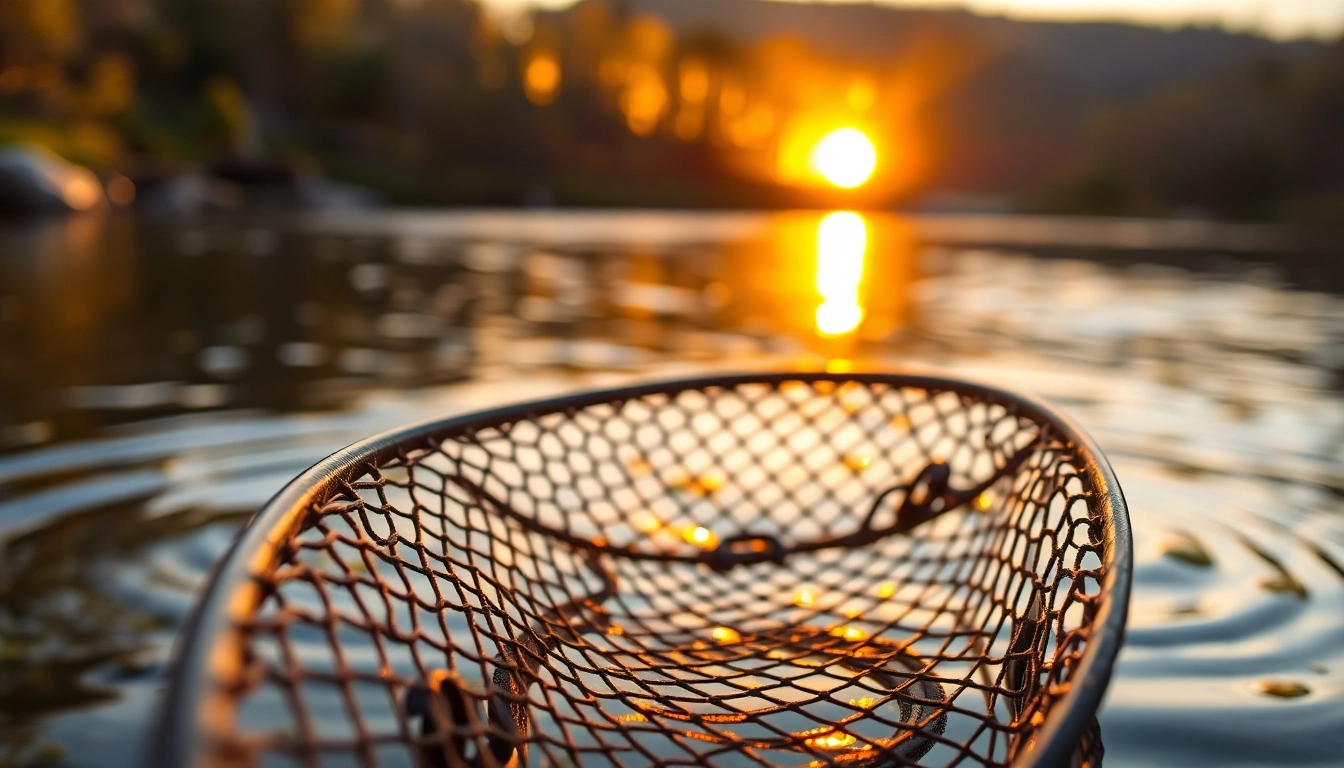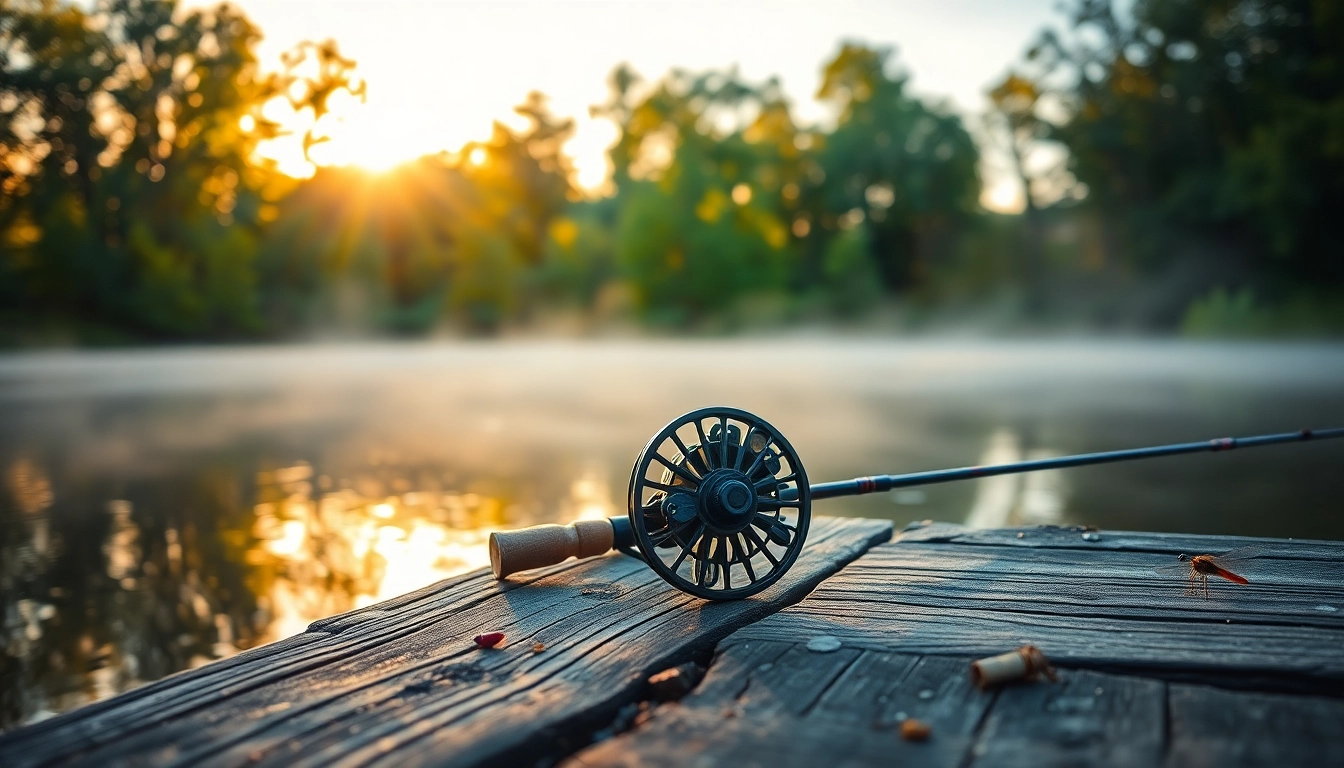Understanding the Importance of a Fly Fishing Net
In the world of angling, a Fly fishing net is often an overlooked piece of equipment, yet it plays a crucial role in enhancing the fishing experience. Beyond its primary function of securing caught fish, a well-selected net contributes to the overall effectiveness of your fishing strategy. In this section, we explore the significance of fly fishing nets, delving into their functionality, types, and durability considerations.
Functionality and Purpose
The primary function of a fly fishing net is to safely catch and handle fish without causing them harm. This catch-and-release method is vital for preserving fish populations and maintaining ecological balance. A good net minimizes stress on the fish, allowing for a greater chance of survival after release. Furthermore, nets assist anglers in other important tasks, such as quickly extracting fish from the water, minimizing injury by not using hooks or hands directly, and gracefully landing larger fish that could otherwise escape. They provide a gentle solution to bring your catch to hand while keeping the fish as unharmed as possible.
Types of Fly Fishing Nets Available
Fly fishing nets come in various styles, each suited for specific fishing approaches and environments. Some common types include:
- Landing nets: Typically used for direct fish retrieval, these nets often feature a hoop on a sturdy handle for easy maneuverability.
- Boat nets: Designed for anglers who fish from boats, these nets have longer handles to assist in reaching over the gunnel.
- Net bags: Variations in mesh size and material allow you to choose nets that are more suited for delicate fish or for multipurpose use, depending on your fishing style.
- Rubberized nets: These nets minimize stress and injury to fish and are particularly popular among catch-and-release anglers.
Material Considerations for Durability
Durability in a fly fishing net heavily relies on the material used in its construction. Common materials include:
- Wood: Often seen as a classic choice, wooden nets are visually appealing and can offer a sturdy structure when well-crafted. However, they may require more maintenance compared to synthetic materials.
- Aluminum: Lightweight and resistant to corrosion, aluminum nets are ideal for those who travel often. Their lightweight nature often makes them easier to maneuver.
- Composite materials: Fishing nets made from composite materials are designed for strength while minimizing weight and are often made to withstand rough conditions.
Key Features to Look for in a Fly Fishing Net
When selecting a fly fishing net, it’s essential to keep certain features in mind to ensure you choose one that suits your needs best. The right net can significantly improve your fishing experience.
Size and Shape Specifications
The size and shape of a fishing net should complement your fishing style. A larger net is advantageous for landing larger fish, whereas smaller nets are often easier to carry and handle. Additionally, the shape of the net’s hoop can influence its functionality: round nets distribute pressure evenly, while rectangular nets allow for easier scooping motions.
Weight and Portability
As an angler, you’ll often need to carry your gear over extended periods. Lightweight folding nets have become a popular choice due to their portability. A net with a collapsible or folding design allows for easy storage and transport while not compromising on functionality.
Handling and Grip Functionalities
The grip of the net handle is a critical feature for comfort and functionality. Anglers should consider nets that have ergonomic handles, as they provide better control, especially when landing a fish. Handle length also matters; a longer handle is beneficial for reaching into deeper water, while a shorter handle may provide more control in tight spaces.
Top Brands and Models of Fly Fishing Nets
While most anglers may agree that various brands offer solid options for fly fishing nets, this section provides an overview of popular ranks and models based on features, pricing, and customer satisfaction.
Comparative Overview of Popular Options
When evaluating different brands, it is essential to compare their offerings based on functionality, materials, and design preferences. For example, some brands are renowned for their durable rubber mesh that minimizes fish injury, while others may stand out for their hand-crafted wooden nets. Researching customer reviews and testimonials will aid you in determining a well-rounded net that will meet your individual needs.
Price Ranges for Every Budget
Fly fishing nets come in various price ranges, accommodating the needs of both beginner and advanced anglers. Generally, basic nets can cost around $20, while high-end, custom-designed models may exceed $200. Budget-conscious anglers should look for versatile nets that meet their requirements without breaking the bank.
Customer Ratings and Reviews Insights
Analyzing customer feedback is a critical aspect of choosing the right fly fishing net. Many online platforms provide detailed reviews, allowing potential buyers to gauge performance over time. Often, angler experiences reveal practical insights about a product’s durability, handling, and versatility across fishing conditions. It can also shine a light on long-term maintenance expectations.
Caring for Your Fly Fishing Net
Investing in a quality fly fishing net is only the beginning; proper care is crucial for preserving your net’s effectiveness and longevity. This section outlines essential maintenance practices.
Maintenance Tips for Longevity
Cleaning your net after each use is vital, especially after fishing in areas with heavy vegetation or mud. Rinse the net with fresh water to prevent sediment buildup, harmful bacteria, and odors. If your net employs a rubberized mesh, inspecting it for tears or damages will help ensure its functional integrity. Regular maintenance checks will also help identify parts that may need replacement.
Storage Best Practices
Proper storage is essential to extend the life of your fly fishing net. Store it in a cool, dry environment away from direct sunlight to prevent the components from degrading over time. If your net is collapsible, ensure it is properly folded and secured to avoid unwanted bending or warping. Additionally, avoid placing heavy objects on top of your net during storage to prevent any shape distortions.
Repairing Common Damages
Despite best efforts in care and maintenance, wear and tear may occur over time. Common issues such as frayed mesh or bent handles can often be repaired. In the case of small tears, a specialized fishing net patch can restore functionality without requiring net replacement. For twisted or damaged handles, sometimes simple adjustments or replacements are feasible. Knowing how to perform these repairs is vital to keep your net in peak condition.
Advanced Techniques for Using Your Fly Fishing Net
Mastering the use of a fly fishing net can significantly improve your catch rate and gestural finesse as an angler. This section presents advanced techniques for utilizing your net effectively.
Methods for Efficient Catch-and-Release
Catch-and-release techniques can adhere to multiple methods based on the fish species and environmental conditions. Using a net minimizes physical handling and stress on the fish. To properly utilize your net in catch-and-release practices, it’s crucial to keep the fish wet, minimize air exposure, and handle them gently to ensure their best chance of survival after release.
Optimizing Use in Different Water Conditions
Water conditions dictate how you should handle your net. In fast-flowing rivers, using a net with a longer handle can give you the reach needed to secure a fish safely without losing control. In shallow waters, opting for a smaller net can improve maneuverability, allowing for more successful catches while reducing the chance of spooking other fish nearby.
Integrating with Other Fly Fishing Gear
Integrating your fly fishing net with other gear—like your rod, reel, and waders—ensures seamless transitions between casting and landing a fish. Having your net reachable while wading or standing in a boat is essential; ensure it is either strapped to your vest or easily accessible at all times. Recognizing how your net fits into your broader fishing strategy is key to improving efficiency.



